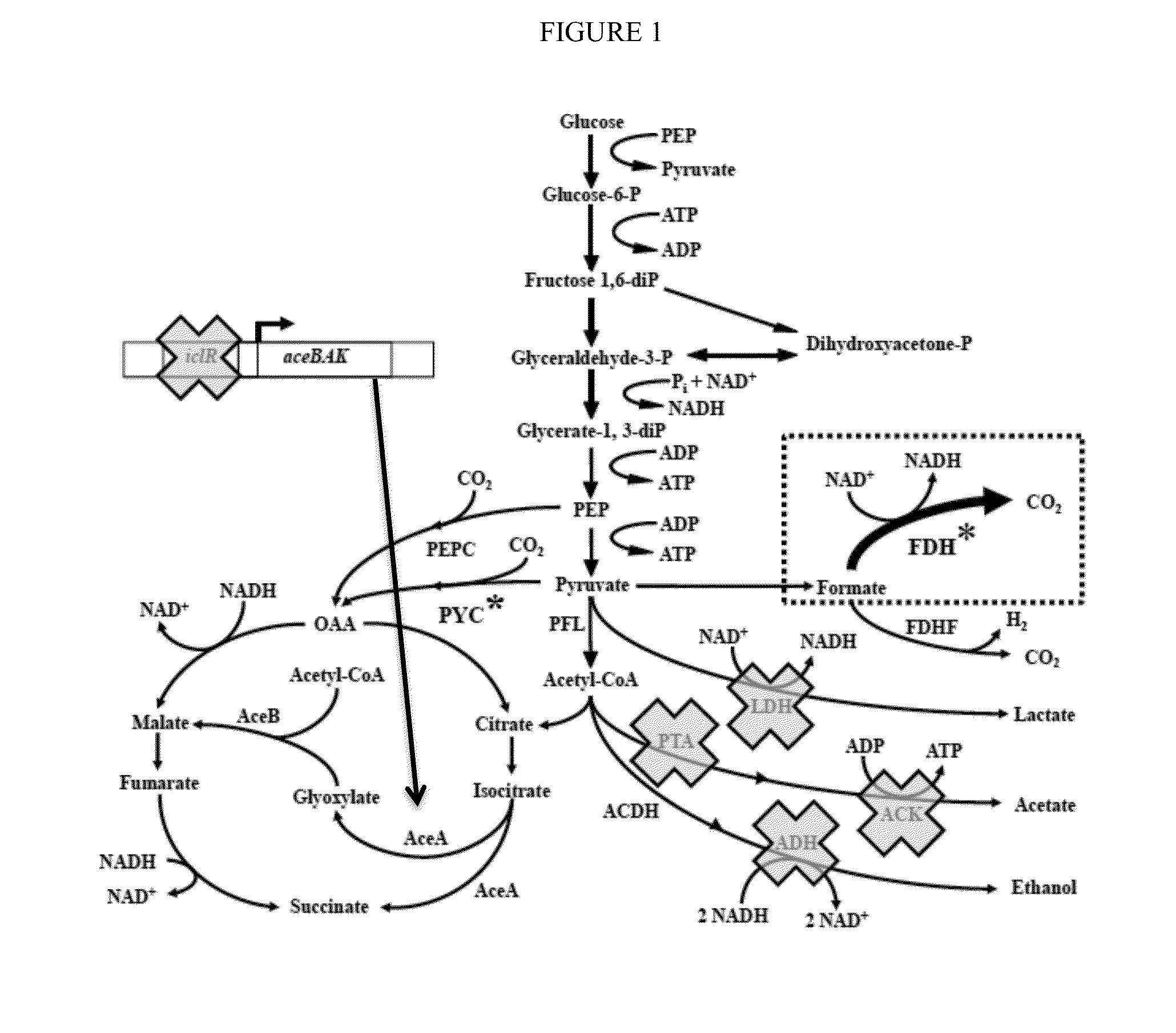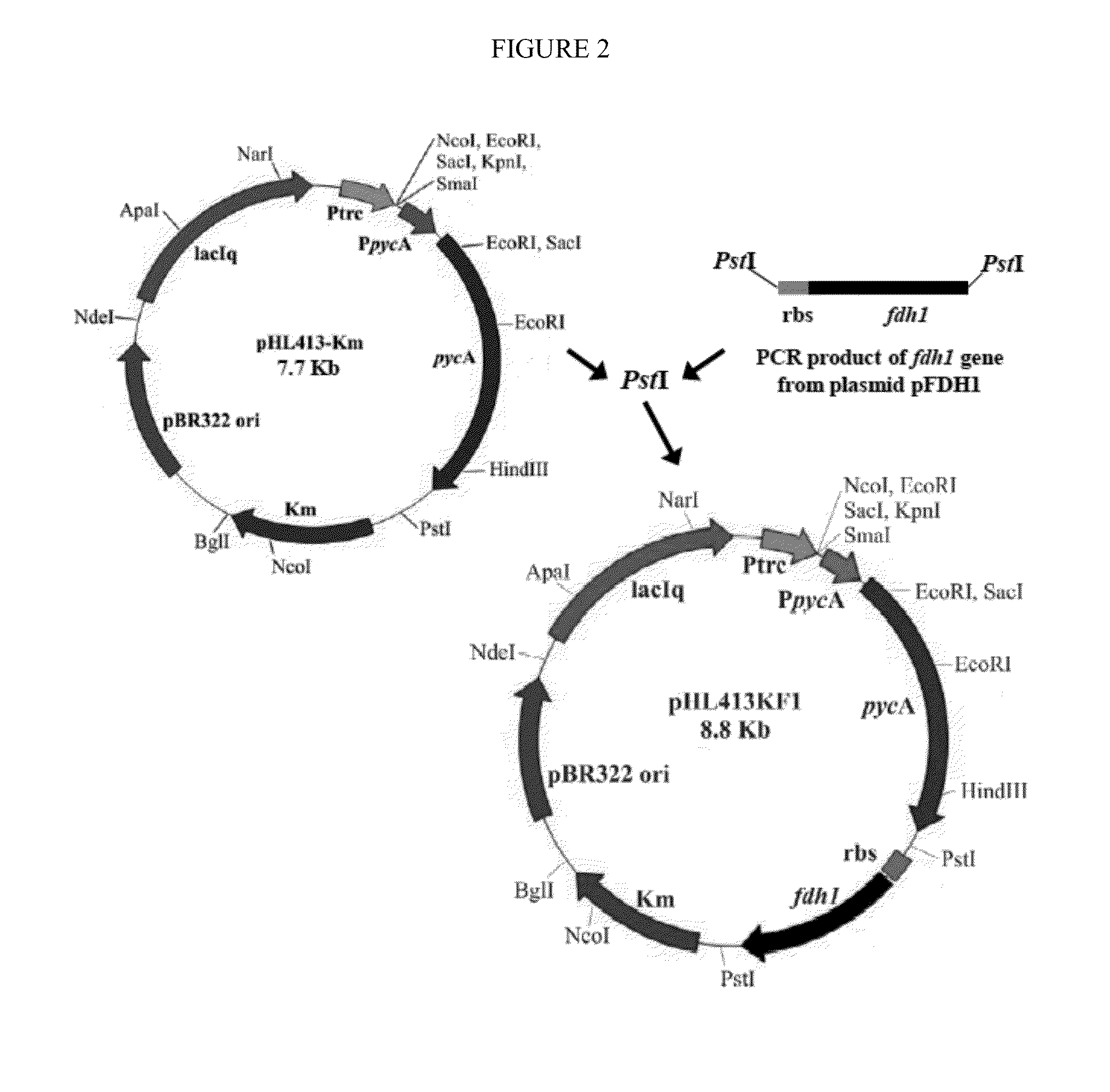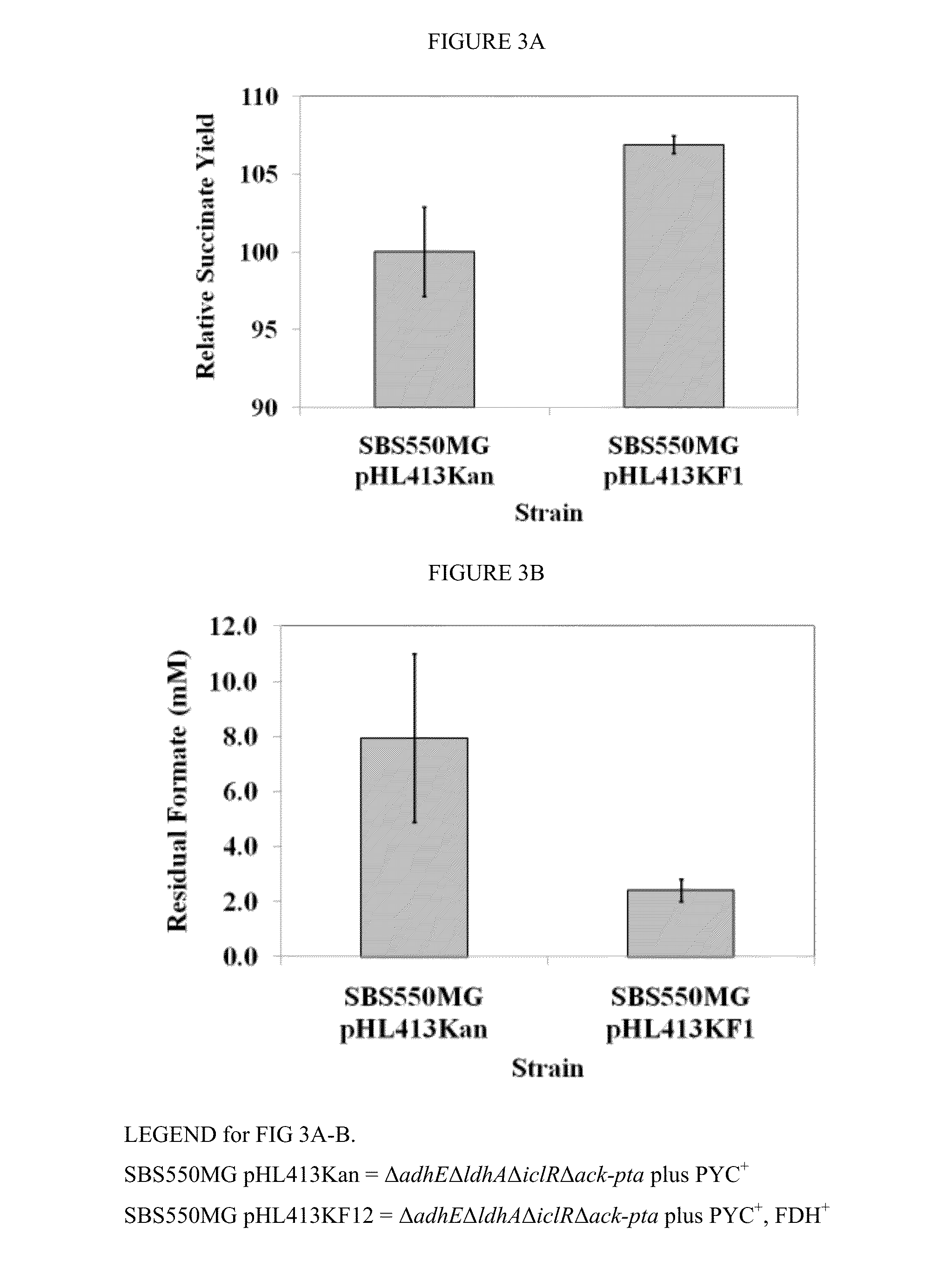Increasing bacterial succinate productivity
a technology of succinate and bacterial succinate, which is applied in the field of sucinate, can solve the problems of low yield and concentration, relatively large amount of growth substrate, and generally not cost-effective use of bacteria, and achieve the effect of increasing the yield and the production rate of succinate, and reducing the byproduct forma
- Summary
- Abstract
- Description
- Claims
- Application Information
AI Technical Summary
Benefits of technology
Problems solved by technology
Method used
Image
Examples
example 1
Methods
[0058]Disrupted bacteria were prepared according to known techniques, essentially as described in U.S. Pat. No. 7,223,567. Overexpressed PYC and FDH was achieved by combining these two genes on one plasmid as shown in FIG. 2, but the genes can also be added to the bacterial chromosome or added by any other vector or even via separate vectors.
[0059]Anaerobic shake flasks experiments were performed at 37° C. with shaking at 250 rpm for 20-24 hours using CO2 purged flasks containing 200 OD units of cells resuspended in 10 ml LB broth supplemented with 20 g / L glucose, 1 g / L NaHCO3, 50 g / L MgCO3, 50 μg / ml kanamycin (FIG. 3), and 50 mM sodium formate (FIG. 6).
[0060]Bioreactor experiments were performed using aerobically grown biomass using modified dual-phase medium with 4 g / L glucose unless noted otherwise followed by the anaerobic succinate production phase using 0.2 L / min CO2, 20 g / L glucose, 6.4 g / L MgCO3, 50 μg / ml kanamycin, and 14.3 M NH4OH to maintain the pH at 7.0 (FIGS. 4 ...
example 2
Results
[0061]To demonstrate the utility and advantages of the invention, we used the previously engineered high succinate producing E. coli strain having ΔadhEΔldhAΔiclRΔack-pta plus PYC+ [strain SBS550MG pHL413Kan]. This strain was further enhanced by adding a NAD+-dependent formate dehydrogenase (FDH+) to regenerate NADH in vivo and manipulate intracellular NADH availability (see dotted box in FIG. 1). The performance of the two strains were then compared.
[0062]In previous studies, it was demonstrated that this NAD+-dependent FDH pathway converts 1 mol of formate into 1 mol of NADH and carbon dioxide (Berrios-Rivera et al., 2002a, b, 2004). Implementation of the NADH regeneration system thus doubled the maximum yield of NADH using glucose as a substrate from 2 to 4 mol NADH / mol of substrate consumed in complex medium.
[0063]In our experiments, this increase in NADH availability significantly changed the final metabolite concentration pattern under anaerobic conditions. The parent s...
PUM
| Property | Measurement | Unit |
|---|---|---|
| purity | aaaaa | aaaaa |
| energy intensive | aaaaa | aaaaa |
| concentrations | aaaaa | aaaaa |
Abstract
Description
Claims
Application Information
 Login to View More
Login to View More - R&D
- Intellectual Property
- Life Sciences
- Materials
- Tech Scout
- Unparalleled Data Quality
- Higher Quality Content
- 60% Fewer Hallucinations
Browse by: Latest US Patents, China's latest patents, Technical Efficacy Thesaurus, Application Domain, Technology Topic, Popular Technical Reports.
© 2025 PatSnap. All rights reserved.Legal|Privacy policy|Modern Slavery Act Transparency Statement|Sitemap|About US| Contact US: help@patsnap.com



